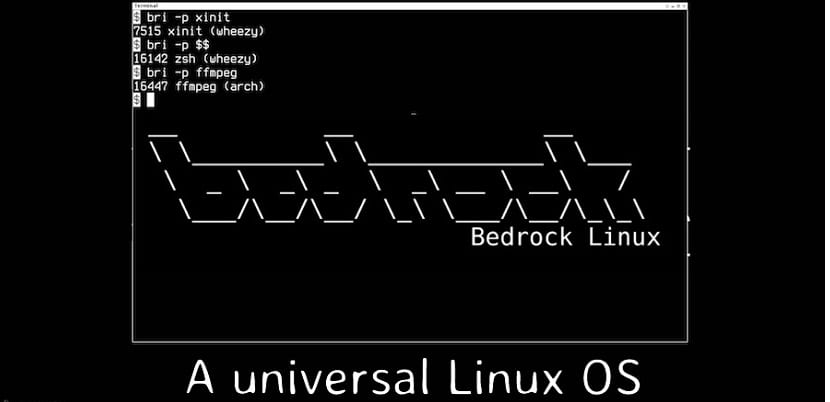
Recientemente a new version of the Bedrock Linux 0.7.3 meta-distribution was announced, which allows the use of packages and components from various Linux distributions, mixing the distributions in one environment.
In the new version support for current Slackware repository is added plus it is possible to share the pixmap library between environments.
As well the addition of support for resolvconf is highlighted to unify resolution settings across environments. Fixed issues with creating environments for Clear Linux and MX Linux.
About Bedrock Linux
The system environment is formed from stable Debian and CentOS repositoriesAlso can install newer versions of programEg from Arch Linux / AUR, and also compile the Gentoo portage.
Bedrock Linux has a great concept It allows users to use the resources of other normally mutually exclusive distributions.
For installing third-party proprietary packages, library support is provided for Ubuntu and CentOS.
Essentially, users can mix and match components and packages as desired from multiple distributions Linux and do that work perfectly.
How does Bedrock Linux work?
Instead of installation images, Bedrock Linux works from a script (sh) that changes the environment of already installed distributions of all kinds. The installation script is prepared for x86_64 and ARMv7 architectures.
This Bedrock Linux script it basically asks you to install other Linux distributions (within the one you are already using) in order to merge them into a single system.

Use Bedrock Linux means using multiple Linux distributions at the same time With this you can open several applications from different distributions and use them on the same desktop at the same time.
Bedrock Linux also makes it possible for you to get new versions of some applications from another distribution if they are not available in the distribution you normally use.
For example, it claims that Debian, Fedora, Manjaro, openSUSE, Ubuntu, and Void Linux replacements work, but there are some issues with replacing CentOS, CRUX, Devuan, GoboLinux, GuixSD, NixOS, and Slackware.
In the process, the user can activate the repositories of other distributions in Bedrock and install applications from them that can be executed in parallel with programs from different distributions.
What is striking about this is that installation from various graphical application distributions is supported.
How to use
For each additional distribution kit connected, a special environment is created ("Stratum"), in which the specific components of the distribution are placed.
The separation is done using chroot, bind-mount, and symbolic links (Multiple working directory hierarchies are provided with a set of components from various distributions, a common / home partition is mounted in each chroot environment.)
At the same time, Bedrock does not aim to provide an additional level of protection and strict application isolation (this leaves a lot to be desired, given that handling the concept of isolation is best these days).
Distribution specific commands are run using the strat utility and distribution management is done with the brl utility.
E.g., if you want to use Debian and Ubuntu packages you must first implement their associated environments with the command «sudo brl fetch ubuntu debian«.
Then, to install VLC from Debian, you can run the command «sudo strat debian apt install vlc»Or in case the user wants from Ubuntu can execute "sudo strat ubuntu apt install vlc«.
Thereafter, can run different versions of VLC (It is not ideal, but it is a way to demonstrate the possibilities it offers) from Debian and Ubuntu - "strat debian vlc file" or "strat ubuntu vlc file".
How to get Bedrock Linux?
For those who are interested in being able to try Bedrock Linux, You can get the installation script for this from the following link.
Right here you will find the instructions that you must follow for the correct implementation of Bedrock Linux.